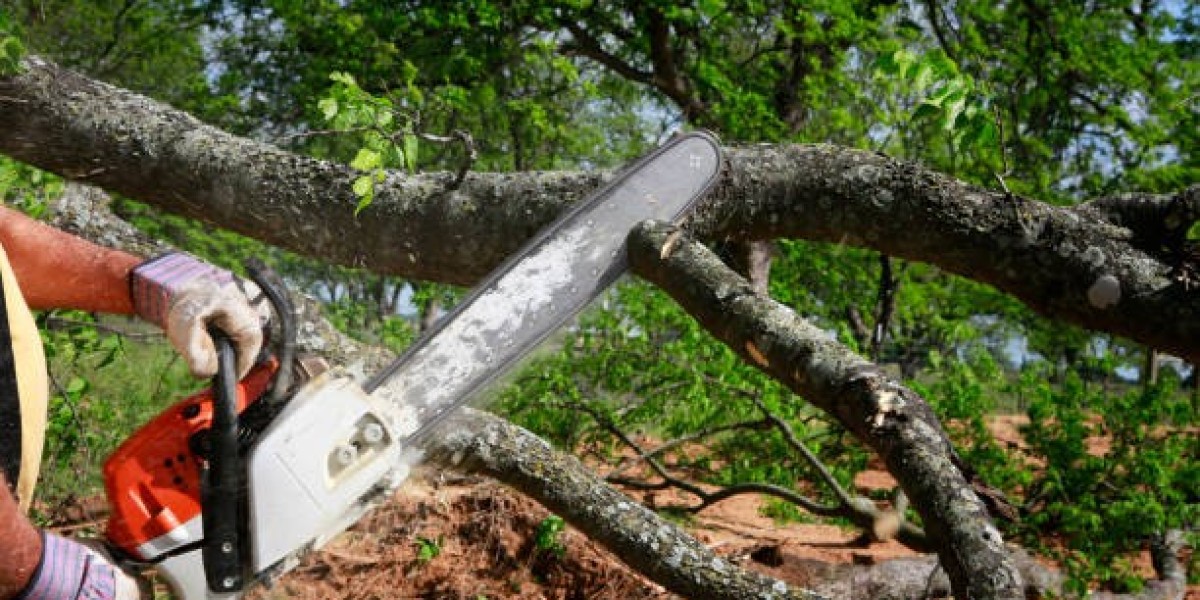Tree removal is a process that requires careful planning and expertise to ensure the safety of both the individuals performing the task and the surrounding property. Whether it's due to disease, storm damage, or simply being in the way of new construction, removing a tree safely is not a simple task. In this article, we'll discuss the essential steps involved in safely removing a tree, the importance of hiring professionals, and some safety tips for the process.
Why Tree Removal is Necessary
There are various reasons why you might need to remove a tree. Some of the most common include:
Health Issues: A tree that is diseased, decaying, or infested with pests can pose a safety risk. A weakened tree is more likely to fall or lose limbs, especially in bad weather.
Safety Concerns: Trees that are too close to a house, power lines, or other structures can be dangerous if they fall or if their branches break off.
Aesthetic or Construction Reasons: Sometimes, a tree needs to be removed to make room for a new structure, driveway, or garden.
Storm Damage: After a major storm, trees may be left unstable or broken. If not dealt with promptly, they can cause further damage or pose a hazard.
Steps for Safely Removing a Tree
Assess the Tree’s Condition Before removal begins, it is important to assess the condition of the tree and its surroundings. A certified arborist or tree removal professional should evaluate the tree to determine if it poses a risk of falling, how the removal process will impact surrounding structures, and how best to handle the tree. The health of the tree, its size, and its proximity to other objects are key factors to consider.
Obtain Necessary Permits Many cities and municipalities have regulations regarding tree removal. Depending on where you live, you may need to obtain a permit before cutting down a tree, especially if it’s large or located in a protected area. Failing to comply with local regulations can result in fines or penalties. It’s important to check with local authorities before proceeding with removal.
Prepare the Area A safe and clear area around the tree is essential for a smooth and safe removal process. Ensure that there are no vehicles, pets, or people in the immediate vicinity. If the tree is located near power lines, it is important to call the utility company to have them shut off or move the lines temporarily. The professionals will also need to assess how to safely remove the tree without causing damage to surrounding buildings or structures.
Use the Right Equipment Tree removal requires specialized tools. The type of equipment used depends on the size and location of the tree. A chainsaw is typically the main tool used to cut the tree down, but in certain cases, equipment like cranes or ropes may be necessary to safely lower large branches or sections of the tree.
Common Equipment:
- Chainsaw: A powerful tool to cut through the trunk and branches.
- Ropes and Rigging: Used to control the fall of the tree or sections.
- Crane or Bucket Truck: May be needed for large trees or trees in difficult-to-reach locations.
- Stump Grinder: Used to remove the stump after the tree is cut down.
Tree Felling The tree removal process itself is called "felling." The tree is felled by cutting through the trunk in a specific way to control its direction of fall. First, a notch is made on the side of the tree facing the direction you want it to fall. The notch is usually made in a V-shape. Then, a horizontal cut is made slightly above the notch to fell the tree. The tree is then carefully guided in its fall using ropes, pulleys, or by simply letting it drop in a controlled manner.
If the tree is particularly tall or in a difficult position, sections of the tree may be removed one by one, starting from the top and working downwards. This method reduces the risk of the tree falling in an uncontrolled manner.
Removing Branches and the Stump Once the tree has fallen, the next step is to remove its branches. Depending on the size of the tree, this can be done using a chainsaw or a saw designed for heavy-duty cutting. Afterward, the stump is typically ground down using a stump grinder to prevent regrowth and to make the area safe for future landscaping or construction.
Disposal After the tree is removed, the wood and debris must be disposed of properly. Some tree removal companies offer to take the wood off your hands, which may be recycled into mulch or firewood. Alternatively, you may choose to keep the wood for personal use, or it may be hauled away for proper disposal. In some cases, a tree can be turned into wood chips and spread around the yard for mulch.
The Importance of Hiring a Professional Tree Removal Service
While removing a tree may seem straightforward, it is often dangerous and complicated. It is recommended to hire a certified tree removal service that has the experience, training, and equipment to complete the job safely. A professional arborist will ensure that the tree is removed in the safest possible manner while protecting your property and minimizing the risk of damage.
Benefits of Hiring a Professional Tree Removal Service:
- Safety: Trained professionals know how to safely use heavy equipment and navigate tricky situations, reducing the risk of injury or property damage.
- Expertise: Arborists are skilled in evaluating the health of trees and determining the best course of action for removal.
- Efficiency: Tree removal specialists have the right tools and experience to complete the task quickly and effectively.
- Insurance Coverage: Reputable tree removal services carry insurance, protecting you from liability in case of accidents.
Conclusion
Tree removal is a complex process that involves careful planning, the right equipment, and specialized knowledge. While some smaller trees may be removed as a DIY project, it’s usually safer and more effective to hire professionals, especially for larger or more dangerous trees. Whether the tree is diseased, damaged, or simply in the way, always prioritize safety, and make sure to follow the proper steps for a safe and efficient removal.








